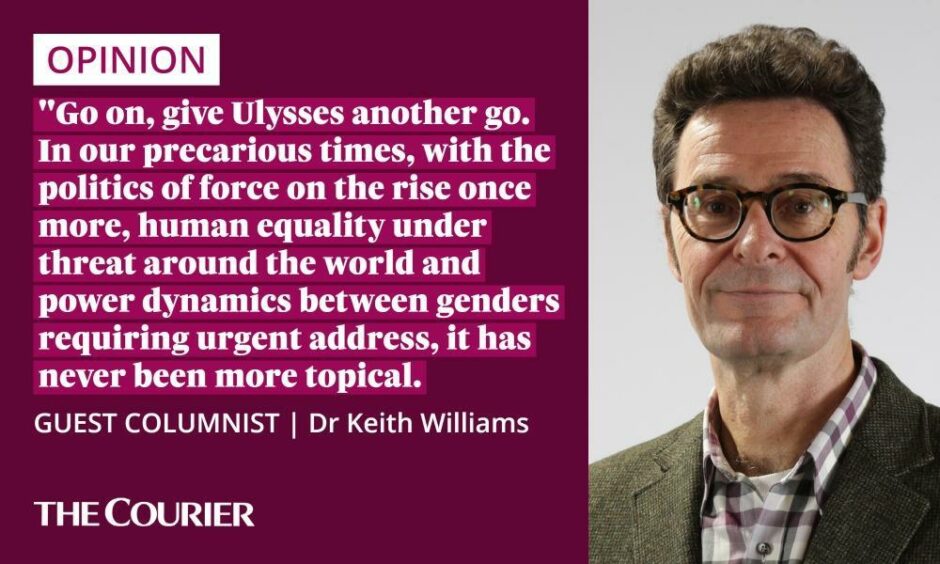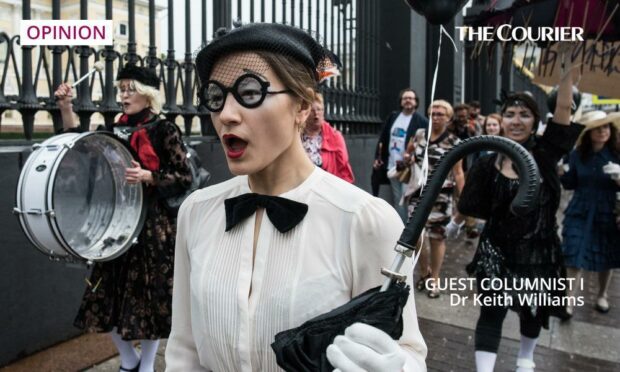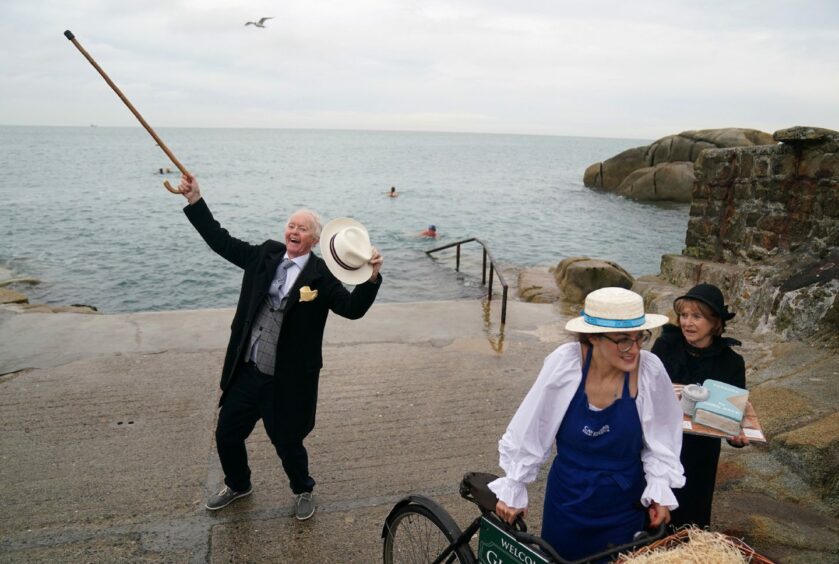This month marks the centenary of James Joyce’s ground-breaking novel, Ulysses.
This hefty tome is more often bought than read all the way through.
It squats reproachfully on countless shelves, postponed to our next lockdown or imagined marooning on Desert Island Discs.
Even Joyce’s life-partner famously never read Ulysses
Nonetheless, despite intimidating bulk and experimentalism, Ulysses remains one of the most creative and influential books ever written, continuing to inspire writers, artists and film makers, from Angela Carter to Mel Brooks.

At its core is everyday life and a celebration of anonymous individuals battling forces threatening to undermine our common humanity.
Mostly written during the horrors of the First World War, Ulysses was published a few years after its conclusion.
Its modern Odysseus, Jewish Irishman Leo Bloom, protests against the imperialism and mass murder of the age, when he says, “Force, hatred, history, all that. That’s not life for men and women”.
A novel rooted in real life and the epic
Its seed grew from real experience when an ordinary Dubliner, Alfred Hunter, rumoured to be Jewish, acted as Good Samaritan towards the young Joyce after a drunken fracas with English soldiers in 1906.
The incident plays a pivotal role in the novel itself.
Joyce retold Homer’s Greek epic, The Odyssey (Ulysses is the Roman name for its hero, Odysseus) in terms of a modern man’s adventures on one day in Dublin.
James Joyce in the latest Eye! @PrivateEyeNews @JJ_Gazette pic.twitter.com/iVuQtYFLHw
— Peter Chrisp (@PeterChrisp) February 16, 2022
He did this to democratise the notion of the heroic and shift its field of action from the battlefield to our everyday thoughts and experiences.
Each chapter corresponds to an episode where Odysseus overcomes hostile gods and monsters while striving to return home from the Trojan War, recounted in Homer’s earlier epic, The Iliad.
Joyce chose Odysseus, rather than Achilles, the killing machine protagonist of the latter, in order to challenge machismo and the politics of force writ large in the industrialised conflict laying waste much of Europe.
Odysseus and Bloom defeat adversaries by brains and wit, not brawn and violence.
A story of slapstick and sexual frankness
Another influence behind Bloom is Chaplin’s tramp, the little Everyman, who gets out of scrapes through slapstick contortions.
Hence in the “Cyclops” chapter, he confronts Joyce’s equivalent of Homer’s one-eyed, man-devouring giant: a narrow-minded nationalist in a Dublin boozer.
By making his own comic hero a scapegoated Jew, Joyce dreamt up a future independent Ireland.
It’s a country more like the one we know now, with room for diversity, tolerance, and open borders.
Joyce was prophetic in placing antisemitism at his novel’s narrative heart, as mid-twentieth century history would confirm so appallingly.
Regarded by many authorities as obscene, Ulysses could not be openly imported or offered for sale in an Ireland dominated by the Catholic Church for fear of it being banned, as was the case in several other countries.
However, it embodies the mental and physical complexity of being human much more holistically than any fiction before. And not just through sexual frankness.
Each chapter is dominated by a different organ or bodily function, from the eye to digestion, with another change of style to match.
Ulysses is a novel for our times
Joyce depicts “Bloomsday” with such completeness, that he boasted if Dublin were ever destroyed in an earthquake it could be recreated from his text.
Norah Barnacle, Joyce’s partner, may never have read the book. But her influence allowed the author to empathise with a female point of view more authentically than many of his male literary contemporaries.
Keeping Bloom/Joyce grounded in everyday reality when they “mansplain” or get too up themselves – ‘Oh rocks!… Tell us in plain words.’ – Norah’s fictional avatar, Bloom’s wife Molly, challenges the hypocrisy of sexual double standards.
Fully in charge of her own desire, she stakes an equal claim to satisfaction though her adulterous liaison that day and illustrates the complexities and compromises inherent in any relationship.
So go on, give Ulysses another go.
In our precarious times, with the politics of force on the rise once more, human equality under threat around the world and power dynamics between genders requiring urgent address, it has never been more topical.
No one can pretend it’s an easy read, but it rewards the effort many times over.
Dr Keith Williams is Reader in English at the University of Dundee. He has published many articles and essays on Ulysses. His latest book, which researches the influence of popular Victorian cinema and projection culture on Joyce’s work, is James Joyce and Cinematicity: Before and After Film (2020).












